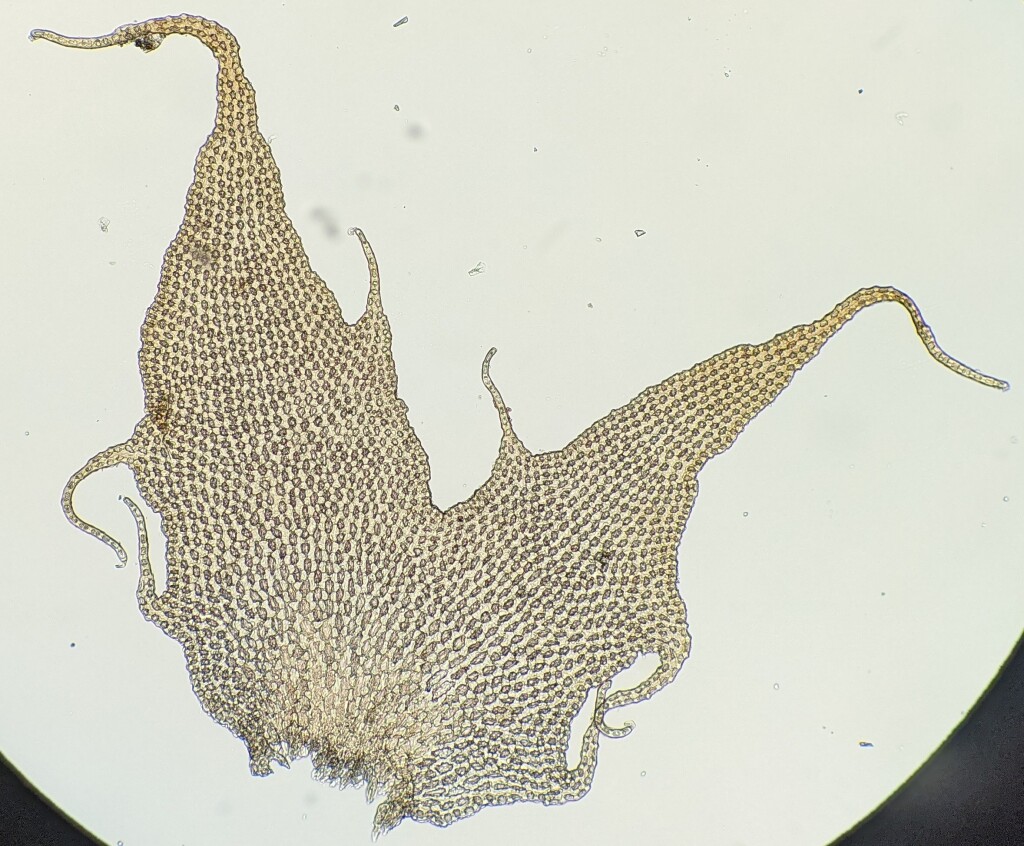Chandonanthus squarrosus
(Menzies) Mitt.Yellowish, golden-brown or reddish brown. Paraphyllia to 0.7 mm long. Lateral leaves 0.9–2.3 mm long, 0.9–2.5 mm wide, widely spreading, often directed in dorsal direction; lobes ovate or triangular, to c. ½ total leaf length, often abaxially sulcate, acuminate, overlapping when flattened. Underleaves subquadrate in outline, bilobed, 0.6–1.5 mm long, 0.4–1.2 mm wide; lobes triangular or ovate, 0.55–0.65 of total underleaf length, terminating in acute or ciliiform apices, with several marginal cilia or laciniae. Leaf cells polygonal, circular or oblong, becoming longer toward basal centre, 15–45 µm long and 15–28 µm wide in lobe bases, 30–80 µm long and 20–38 µm wide near centre at base, densely covered with variably-sized hemispherical papillae, with large and confluent trigones, with (4–) 5–7 oil bodies toward centre, 2–4 oil bodies in cells of lobe base; oil bodies hyaline or dull greyish. Androecial bracts like vegetative leaves except dorsal lobe deeply ventricose. Female bracts next to perianth bilobed to c. 0.65 the total length and with cilia or deeply laciniate and often appearing 4-lobed, 3.8–4.3 mm long, 3.4–3.8 mm wide, with paraphyllia on abaxial bases, free from bracteole; bracteole similar to bracts except consistently bilobed and sometimes smaller and to c. ½ bract size. Perianth 4.2–6 mm long, 1.7–2.2 mm wide.
VAlp. In Victoria recorded only from large boulders in montane Nothofagus cunninghamii dominated rainforest on the south slope of the Baw Baw Plateau. Also Tasmania and New Zealand.
Engel, J.J. & Glenny, D. (2008). A Flora of the Liverworts and Hornworts of New Zealand, Vol. 1. Missouri Botanical Gardens Press: St Louis, U.S.A.
 Spinning
Spinning